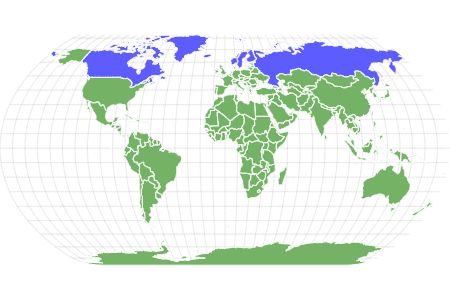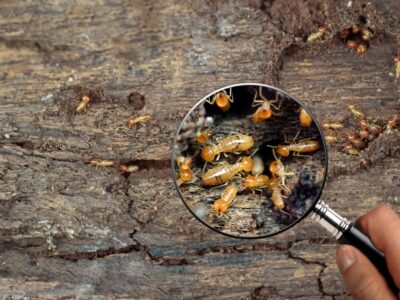Moose
Alces alces
Renews it's enormous antlers every year!
Advertisement
Moose Scientific Classification
- Kingdom
- Animalia
- Phylum
- Chordata
- Class
- Mammalia
- Order
- Artiodactyla
- Family
- Cervidae
- Genus
- Alces
- Scientific Name
- Alces alces
Read our Complete Guide to Classification of Animals.
Moose Conservation Status
Moose Facts
- Main Prey
- Grass, Twigs, Pondweed
- Habitat
- Forest areas close to the Arctic tundra
- Diet
- Herbivore
- Average Litter Size
- 1
“Largest of all deer species.”
Moose are the largest of the deer species and the tallest mammals in North America. Found in the U.S., Canada, Asia, and Europe, fully grown adults stand six feet from ground to shoulder. They are identified by long faces, muzzles hanging over their chins, and a flap of skin swaying under their throat. Male moose grow huge antlers up to six feet wide from one end to the other.
5 Incredible Moose Facts
- Adult male moose weigh between 1200 and 1800 pounds. The largest moose ever recorded weighed in at 1,808 pounds!
- Life expectancy for a moose in the wild is 15 to 20 years.
- Moose are animals that feed on land and aquatic plants.
- Moose hooves work like snowshoes in harsh winter climates.
- Despite looking clumsy, moose can run up to 35 miles per hour.
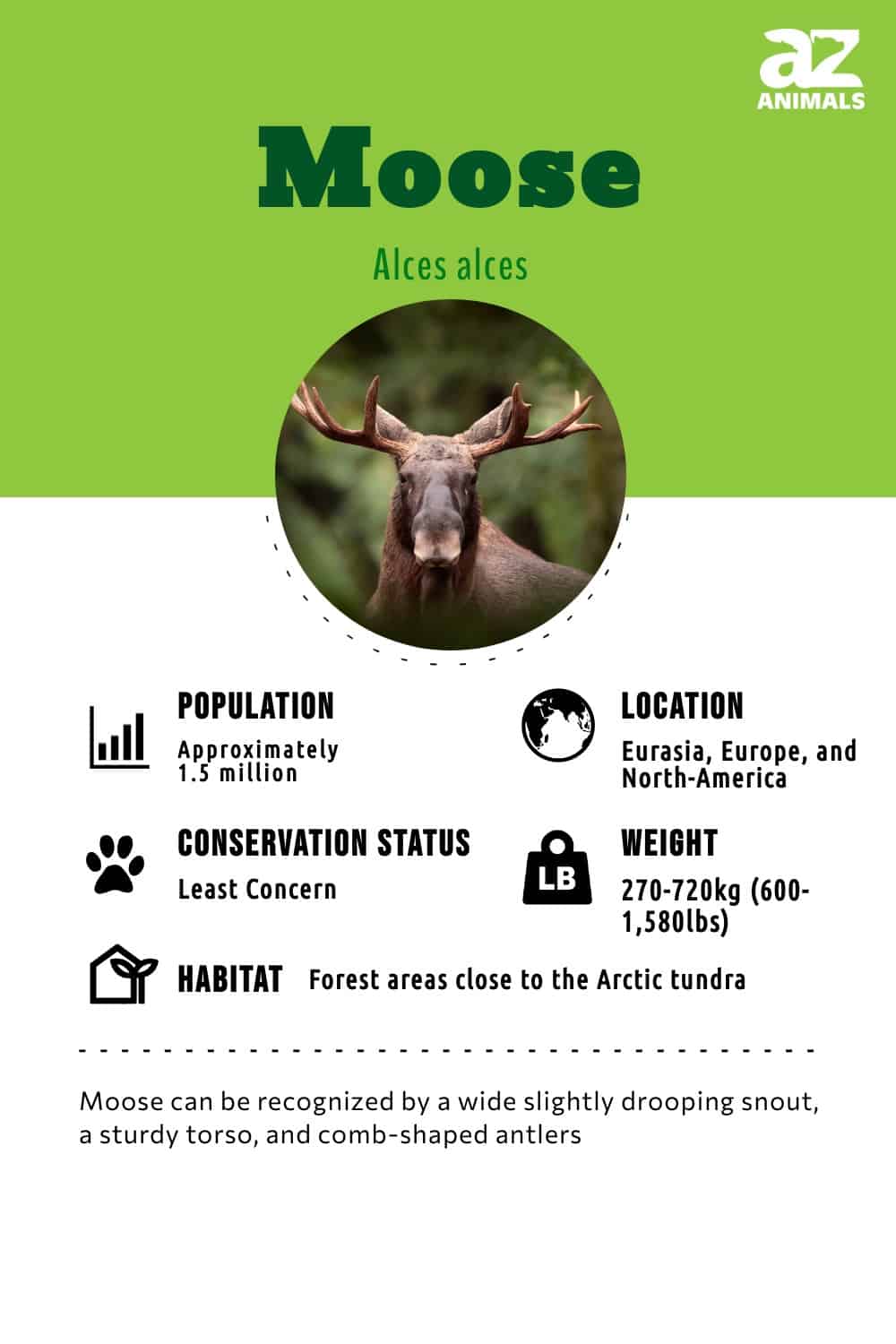
Scientific Name
Commonly called moose in America and elk in Europe and Asia, these large animals bear the scientific name “Alces alces.” As mammals, they belong to the order Artiodactyla, family Cervidae, and genus Alces.
The common name “moose” became a recognized English word no later than 1606. This term comes from the Algonquian language name “mo-swa” or “moosh” with possible influences from multiple other languages.
Evolution
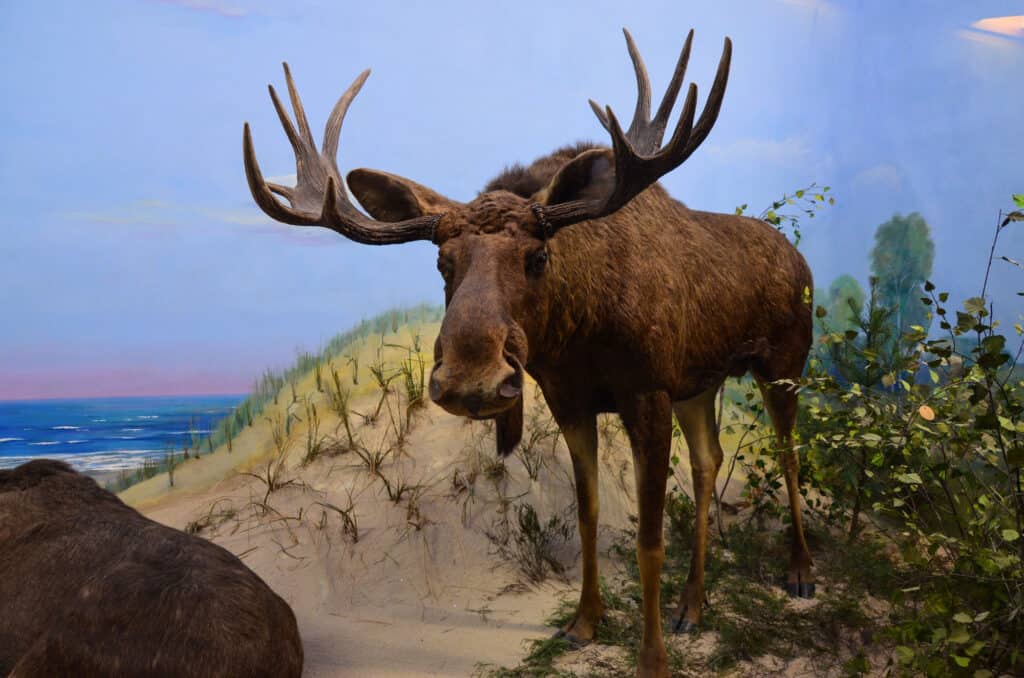
The ancestor of the modern moose lived during the Pliocene era in Western and Central Asia
©D.serra1/Shutterstock.com
The ancestor of the elk, Libralces gallicus, lived about 2 million years ago. The ancient cervid was known for its sweeping antlers capable of rivaling the Megaloceros’ with a spread of about 6 feet wide or even more. During the Pliocene era it wandered about the grasslands of Northern Europe where the climate was mild.
The ancestor of the moose was also about twice as large as the modern moose found in Alaska with its antlers extending horizontally. It is actually the best-known member of the genus of Eurasian deer Libralces which could be found in the area between France and Tajikistan.
Appearance & Behavior

Moose are very large, sturdy, and strong animals. They stand from hoof to shoulder as high as a fully grown man, at about six feet. Their bones are large and their bodies are muscular. Females are smaller than males, usually weighing from 800 to 1200 pounds as adults. Although they can grow larger, male adults range from 1200 to 1600 pounds, on average.
Moose are animals that live in herds during the breeding season in the wild, although they typically appear solitary or at a distance from other members of the herd. In fact, they are the most solitary and antisocial animals in the wild, outside of breeding. During mating season, males form their own herds of females called “harem herds.” Males fight each other for the right to mate with a harem.
Moose fur is light brown to dark brown in color, easily camouflaging them in their surroundings. This fur is long and thick, with each hair being hollow to aid in warmth. Their legs are long, with the front pair being slightly longer than the back. This makes moose appear gangling and clumsy. But the longer front legs help them amble over forest debris, such as fallen trees and branches.
The moose’s head is long like a horse‘s, but features an enlarged nose and upper lip. Their ears are small, as is their tail. Adding to their funny faced-appearance is a humpback appearance caused by large and strong shoulder muscles. On their throat hangs loose skin called a dewlap.
Large, broad, and flat antlers make a moose’s appearance even more distinct from other members of the deer family. Only males have these antlers that stretch between four and six feet across at full growth. These antlers start growing in late spring or early summer, first covered by a fuzzy skin called velvet. In the velvet are tiny blood vessels that feed nutrients to the antlers to help them grow. When the antlers stop growing by the end of summer, these blood vessels dry up and the velvet starts shedding. By early fall, moose antlers take on the characteristic look of dried bone. They weigh up to 40 pounds and fall off during winter.
Moose feed throughout the day. They are most active at dawn and dusk. Although they cannot see very well, they have an exceptional sense of smell. These large mammals also hear well. They are strong swimmers from a few weeks after birth and can reach a swimming speed of up to six miles per hour. Moose even fully submerge and stay underwater for up to 30 seconds at a time.
Moose are gentle and peaceful on their own in their natural habitat. But if bothered by other animals or humans, they become aggressive. These mammals are highly territorial and do not hesitate to charge at anyone or anything threatening their space. Even though they look clumsy and slow, moose can easily outrun humans. In a battle against one of their biggest predators, the brown bear, a moose puts up a good fight. They even sometimes win. To attack a predator or human, moose repeatedly stomp their legs on the threatening creature and use their antlers in defense.
Habitat
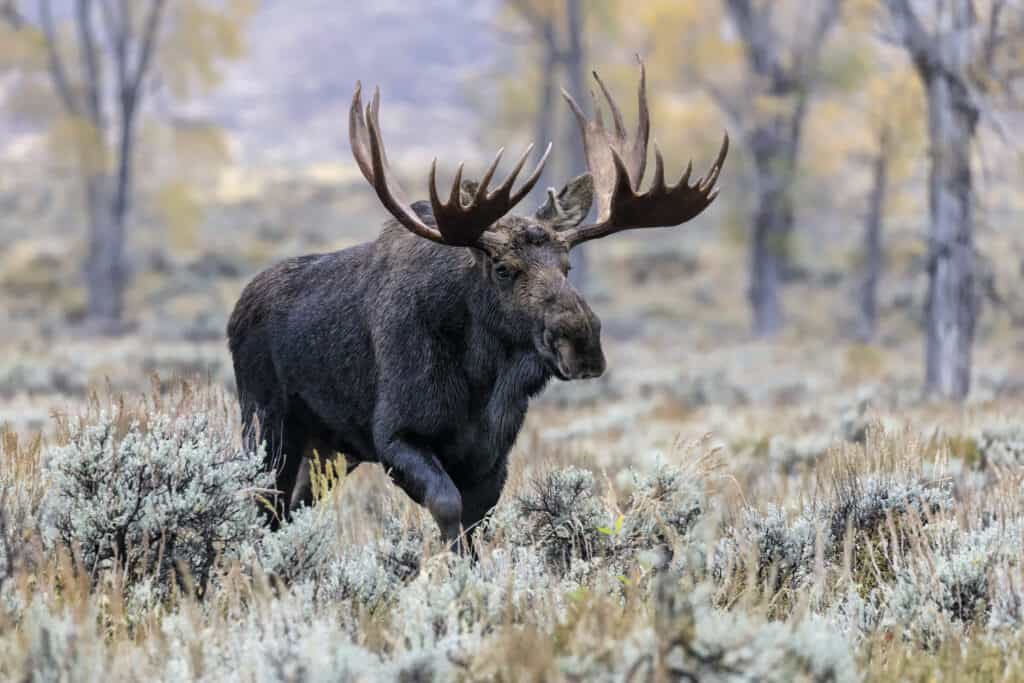
Because they do not perspire, moose cannot withstand temperatures above 80 degrees Fahrenheit
©David Osborn/Shutterstock.com
Moose live throughout the colder northern regions of North America, Europe, and Asia where there is annual snow cover. They cannot live in temperatures above 80 degrees, as they do not sweat. The foods they eat create a lot of body heat during digestion.
Regions have subspecies, each with unique adaptations to their environment. North American moose include the eastern moose of Canada and the northeastern U.S.; the northwestern moose of central Canada, North Dakota, Minnesota, and Michigan; Alaskan moose of northwestern Canada and the state of Alaska; and the Shiras moose of the U.S. and the Canadian Rocky Mountains.
In Europe and Asia, some animal experts consider the moose family to contain several subspecies, too. These unofficial subspecies include the European moose, Siberian Yakut moose, west Siberian Ussuri moose and east Siberian Kolyma moose.
Each subspecies of moose differs according to its geography, size, antler characteristics and fur. Body sizes differ due to localized diet and conditions. Alaska and eastern Siberia have the largest moose, with bulls weighing an average of 1300 pounds and up to seven feet tall at the shoulder. Wyoming and Manchuria are home to the smallest moose with bulls weighing up to only 770 pounds.
Diet

Moose are herbivores that graze from dawn to dusk. They eat up to 70 pounds of vegetation per day. Their habitat consists of plant-rich environments with shrubs available for feeding. The animals prefer shrubs disturbed by forest fires, flooding, or avalanches. In summer, moose also feed on aquatic vegetation. They wade into water to reach these plants and even dive underwater to reach them. These large mammals enjoy mineral licks.
In winter, you can find moose eating fir, yew, and other conifers. To get through heavy blankets of snow moose herds follow a system of trails they trample. These trails form a “moose yard.”
Preferred foods in their diets include bark, leaves, twigs, pine cones, tree buds, shrub buds, and water lilies. Favorites are willow, aspen, and balsam fir. When they eat, their food passes through four stomach chambers as part of digestion. The first chamber ferments the food and the other three chambers extract nutrients. Like cows, moose “chew their cud.” Cud is regurgitated food they chew on for a period of time before swallowing.
Foods poisonous to these otherwise hearty animals include chokecherry, European yew, and Japanese yew plants. The plants prove deadly to moose because their cells contain cyanide gas. Within a few hours of eating these plants the moose dies. Sadly, these trees and shrubs are common in cultivated gardens throughout moose territory, such as Alaska.
Moose prefer eating from plants at their head or shoulder level, especially with up to 40 pounds of antler weight on their heads. To reach other levels of food, they stoop to their front knees or spread their legs wide apart like a giraffe. For a complete analysis of their diet, give our ‘What Do Moose Eat?’ page a read!”
Predators & Threats
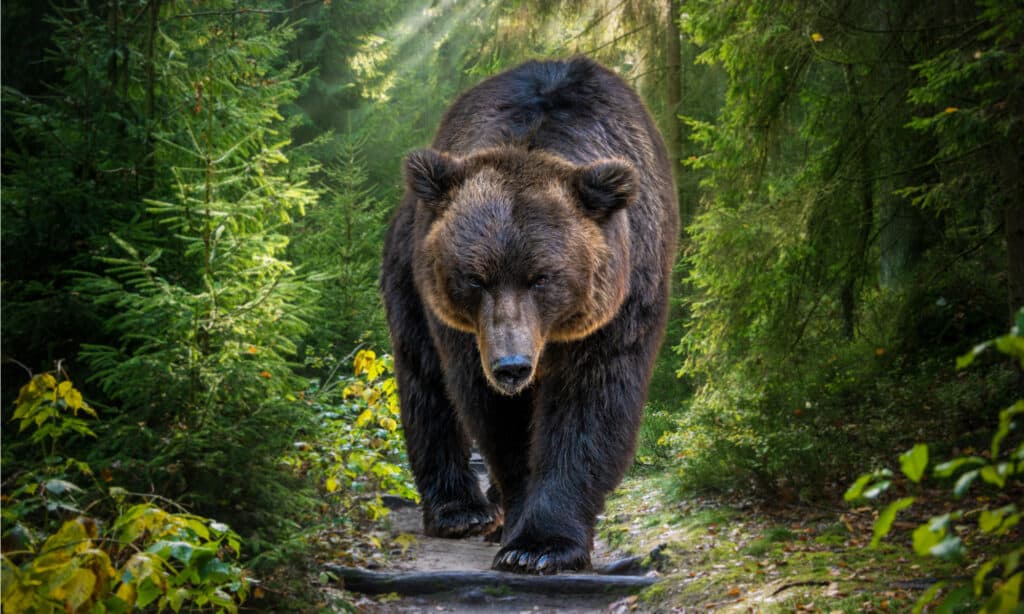
Brown bears are one of moose’s main predators
©Michal Hlavica/Shutterstock.com
The biggest threats to moose include bears, wolves, humans, and ticks. Both brown and black bears target moose as a meal source, especially during calving season. One moose provides multiple meals for these large predators. A moose also makes an attractive buffet for a wolf pack.
To defend themselves against predators like bears and wolves, moose can run up to 35 miles per hour.
When deep snow covers the ground, they cannot run fast. This is when they use another defense tactic. They find hard ground with the least possible amount of snow, such as frozen lakes or areas of land where snow has blown away. They also back up against forests dense with trees to keep wolves away from their hindquarters. If they must face off these animals or packs, they charge at their predators, kicking their legs in a way that can kill wolves and leave bears dazed.
Another moose defense against predators is going into low-level bodies of water, not deep water where wolves can swim well. Wolves struggle to attack a moose in more shallow water.
Humans hunt moose but it often takes multiple shots to take one moose down. In fact, many hunters in Siberia prefer coming up against a grizzly bear, as opposed to an angry moose.
Global warming increases tick infestations where moose live. In a warmer winter, tick populations surge. These tiny parasites can wipe out a moose herd by weakening them through blood loss. Many moose die of anemia caused by ticks each year. Trying to rub ticks off of their bodies leaves many moose with hair loss in patches. This disrupted coat leads to hypothermia in winter. In New Hampshire, biologists credit a 40 percent decline in moose population in the past 10 years to ticks and other parasites like them.
Reproduction, Babies, and Lifespan

Moose often have one calf although they may give birth to twins, or even triplets
©Ghost Bear/Shutterstock.com
In early fall, male moose start forming harem herds of females ready to mate. These females attract the males using a strong scent and deep calls. Males sometimes challenge each other for the right to mate with a harem. These challenges involve use of their antlers as a threat display. They can also push each other with their antlers in a fight. But the fights do not usually get very serious because antlers can get caught together, leading to death of both bulls. At the end of these challenges, the dominant moose stays with the herd and the submissive loser of the fight scurries away.
Female moose give birth to one baby in spring or summer. Sometimes a moose can bear twins or even triplets. But most births are just one calf. Calves stand up on their first day and swim well within a few weeks. At about six months of age, calves wean from their mothers. But they remain with their mother until she has another calf in the following mating season. Moose are very aggressive in the protection of their young. In fact, bull moose even charge humans or other threats during mating season and before the birth of their young.
Being a moose calf is dangerous. Bears and wolves enjoy moose meat as part of their diet. About half of calves die due to these animal attacks before the age of six weeks. At four to six years of age, if they live that long, a moose calf is fully grown. But once they live to their full size, most survive into old age. Adult moose enjoy a survival rate of 95 percent. They typically live 15 to 20 years in the wild.
Population
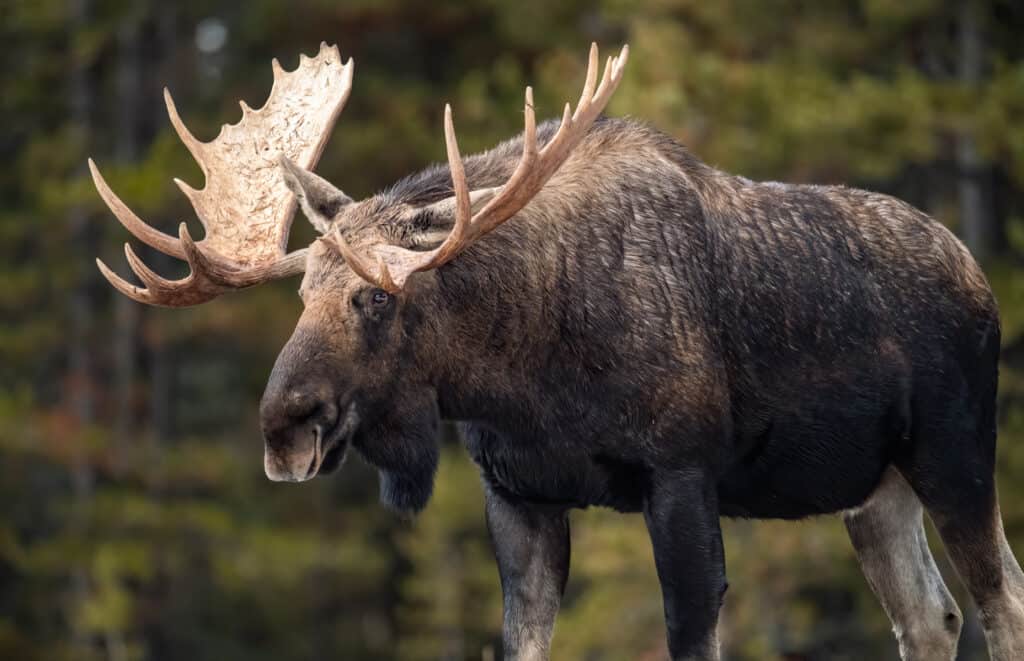
Things look pretty bright for the world’s moose population which continues to increase
©Harry Collins Photography/Shutterstock.com
Moose are robust creatures. This keeps populations high. There are between 500,000 and one million moose in Canada, alone. In Newfoundland, moose were introduced to the area in the 1900s. Four moose placed in that region at that time reproduced effectively and now over 150,000 exist from those original parents.
In the United States, about 300,000 moose exist. Of these, 200,000 live in Alaska. Moose also live in Finland, Norway, Sweden, Latvia, Estonia, Poland, Czech Republic, and Russia. Their conservation status worldwide is listed as of least concern and their numbers continue to increase.
Moose FAQs (Frequently Asked Questions)
What are the differences between a Moose and a Bison?
While moose are very large animals, bison can be even larger! The key difference between moose and bison is that moose are taller, with larger horns, but also weigh less. Male bison often weigh over a ton while no moose on record has ever weighed that much.
Moose vs. caribou: what are the differences?
Moose and caribou (reindeer) are often confused with one another because they’re both large animals that live in northern climates. While both animals are large, moose are significantly larger on average. In addition, the two animals have very different antlers. Moose antlers are wider while caribou antlers come to thinner points.
Moose vs cars: How dangerous are they?
The fatality rate of hitting a moose with your car is low. Studies in Maine found the rate was 1 in 271 while Alaska is 1 in 200. However, about 20% of car accidents with moose lead to injury.
Are Moose herbivores, carnivores, or omnivores?
Moose are Herbivores, meaning they eat plants.
What Kingdom do Moose belong to?
Moose belong to the Kingdom Animalia.
What phylum do Moose belong to?
Moose belong to the phylum Chordata.
What class do Moose belong to?
Moose belong to the class Mammalia.
What family do Moose belong to?
Moose belong to the family Cervidae.
What order do Moose belong to?
Moose belong to the order Artiodactyla.
What genus do Moose belong to?
Moose belong to the genus Alces.
What type of covering do Moose have?
Moose are covered in Hair.
In what type of habitat do Moose live?
Moose live in forest areas close to the Arctic tundra.
What do Moose eat?
Moose eat grass, twigs, and pondweed.
What are some predators of Moose?
Predators of Moose include humans, bears, and wolves.
What is the average litter size for a Moose?
The average litter size for a Moose is 1.
What is an interesting fact about Moose?
Moose renew their enormous antlers every year!
What is the scientific name for the Moose?
The scientific name for the Moose is Alces Alces.
What is the lifespan of a Moose?
Moose can live for 10 to 16 years.
How fast is a Moose?
A Moose can travel at speeds of up to 20 miles per hour.
What is the difference between a moose and a deer?
The key differences between a moose and a deer include their size, range, and morphology. Moose are much larger than deer, and they can weigh several hundred pounds more than them and stand twice as tall.
Who will win a fight between a wolf and a moose?
An adult moose will kill a single wolf in a fight. Cases exist where a single wolf has killed a moose, but they are usually juveniles if not calves.
What is the difference between an Irish elk and a moose?
The main differences between Irish elk and moose are their size, their habitat, and their status as a population.
Who would win a fight between a moose and a bear?
A bear would win a fight against a moose in the vast majority of cases. Bears know how to track down and kill moose when they are young and juveniles. They’re also familiar with hunting and killing adult moose, too.
What are the differences between a moose and a reindeer?
The key differences between a moose and a reindeer are size, appearance, lifespan, habitat, habitat, and physical features.
What are the key differences between a sambar deer and a moose?
The biggest differences between a sambar deer and a moose are their size and morphology. Moose are larger than sambar deer, weighing between 600 and 1,500 pounds, standing between 4.6 and 6.9 feet at the shoulder, and measuring between 7 and 10 feet long! The sambar deer maxes out at 1,200 lbs, 5 ft tall, and 8.9 ft long.
Thank you for reading! Have some feedback for us? Contact the AZ Animals editorial team.
Sources
- David Burnie, Dorling Kindersley (2011) Animal, The Definitive Visual Guide To The World's Wildlife
- Tom Jackson, Lorenz Books (2007) The World Encyclopedia Of Animals
- David Burnie, Kingfisher (2011) The Kingfisher Animal Encyclopedia
- Richard Mackay, University of California Press (2009) The Atlas Of Endangered Species
- David Burnie, Dorling Kindersley (2008) Illustrated Encyclopedia Of Animals
- Dorling Kindersley (2006) Dorling Kindersley Encyclopedia Of Animals
- David W. Macdonald, Oxford University Press (2010) The Encyclopedia Of Mammals

